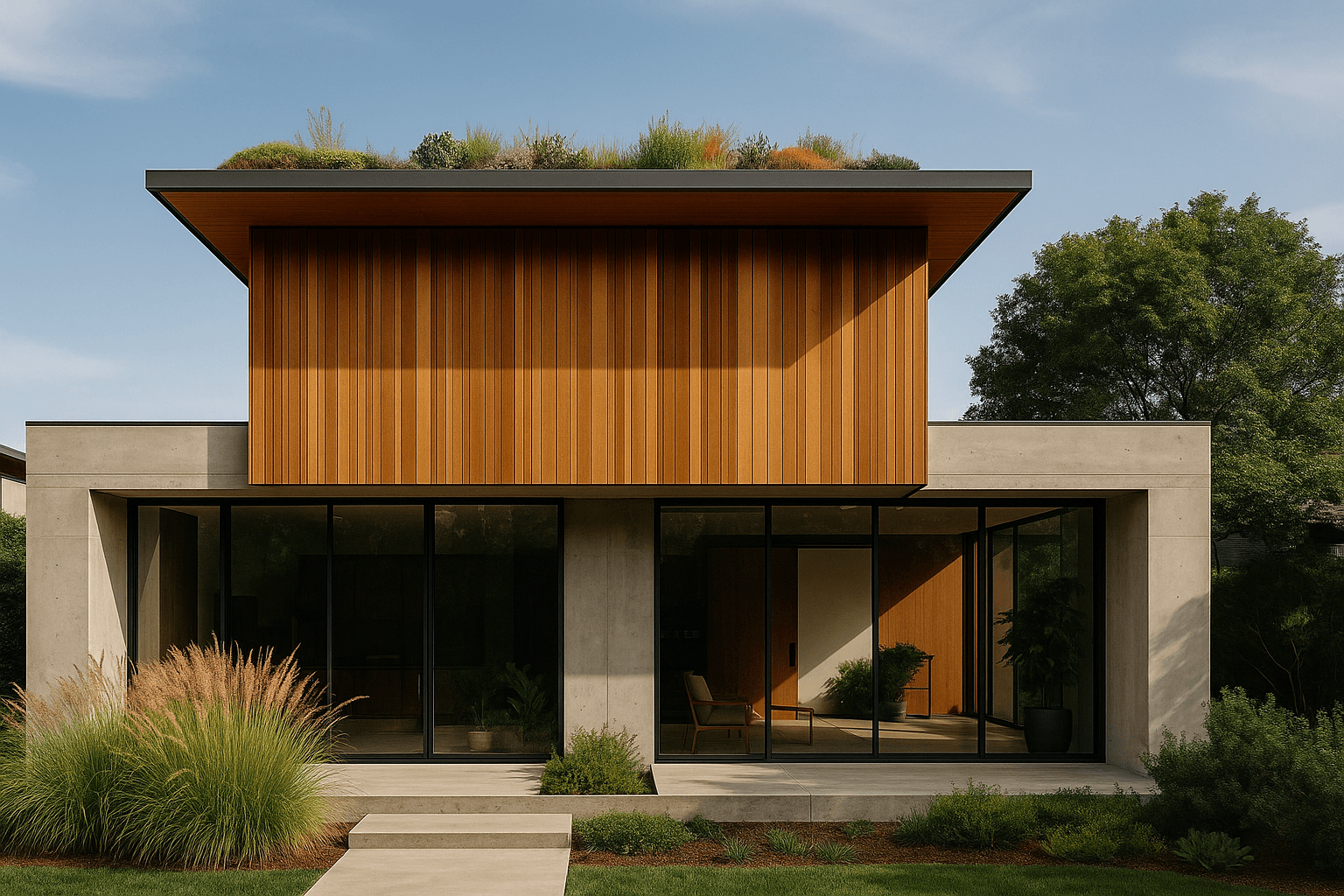As the architecture industry responds to growing environmental concerns, innovative sustainable materials are playing an increasingly important role in modern building design. At VERIAN Architecture, our commitment to environmental responsibility drives us to continuously explore new materials that reduce our ecological footprint without compromising on aesthetic quality or structural integrity.
1. Cross-Laminated Timber (CLT)
Cross-laminated timber represents one of the most promising developments in sustainable construction. Made by layering wood boards in alternating directions and bonding them with non-toxic adhesives, CLT offers remarkable structural strength comparable to concrete and steel, but with a significantly lower carbon footprint.
CLT serves as both a structural and finish material, reducing the need for additional layers. Its natural thermal properties contribute to energy efficiency, while its aesthetic warmth brings a biophilic element to minimal interiors. We've incorporated CLT in several recent residential projects, using it for load-bearing walls and floor systems that remain visibly expressed in the finished spaces.

2. Recycled Metal Cladding
Reclaimed and recycled metals are transforming architectural facades with their durability and distinct aesthetic character. Weathering steel (commonly known as Cor-Ten), recycled aluminum, and repurposed copper all offer low-maintenance exteriors that develop rich patinas over time, connecting buildings to their environments through natural aging processes.
Beyond their visual appeal, these materials significantly reduce the embodied energy of buildings by avoiding new resource extraction. Their longevity—often measured in decades rather than years—further enhances their sustainability credentials through reduced replacement cycles.

3. Hempcrete
Hempcrete, a biocomposite material made from hemp hurds, lime, and water, offers exceptional insulative and moisture-regulating properties. Less brittle than traditional concrete, hempcrete continues to absorb carbon dioxide throughout its lifetime, actively offsetting emissions associated with construction.
We've begun incorporating hempcrete in non-structural wall assemblies, particularly in residential projects where indoor air quality is a priority. Its natural resistance to mold and pests eliminates the need for chemical treatments, while its breathability creates healthier interior environments.
4. Recycled Glass Surfaces
Recycled glass is being transformed into stunning architectural applications, from terrazzo-like flooring to decorative wall panels and countertops. These materials divert waste from landfills while creating visually distinctive surfaces that complement minimalist design schemes.
In a recent commercial project, we specified recycled glass panels for interior partitions, allowing light to flow through spaces while maintaining privacy. The subtle variations in color and translucency create ever-changing effects as the sunlight shifts throughout the day.
5. Mycelium-Based Materials
Perhaps the most revolutionary sustainable material on our list, mycelium-based composites are grown rather than manufactured. Derived from mushroom roots, these materials can be cultivated in molds using agricultural waste as a substrate, then heat-treated to create lightweight yet strong building components.
While currently limited to non-structural applications, mycelium-based panels offer excellent acoustic and thermal insulation properties. They are fully biodegradable at end-of-life, completing a true cradle-to-cradle lifecycle. We're closely monitoring developments in this emerging field and plan to incorporate mycelium-based materials in upcoming projects.
Implementation Challenges
Despite their environmental benefits, integrating these materials into contemporary architecture presents certain challenges. Building codes may not yet fully accommodate innovative materials, requiring additional testing and documentation. Cost premiums can also be a factor, though these are increasingly offset by performance benefits and declining prices as adoption grows.
At VERIAN Architecture, we take a pragmatic approach, carefully balancing environmental aspirations with practical considerations of budget, code compliance, and client preferences. By strategically incorporating sustainable materials where they offer the greatest impact, we create buildings that are both environmentally responsible and architecturally exceptional.
Looking Forward
The development of sustainable building materials continues to accelerate, driven by environmental necessity and technological innovation. As architects, we have both the opportunity and responsibility to champion these materials, demonstrating their potential through thoughtful implementation in our projects.
Through material selection alone, we can significantly reduce the carbon footprint of new construction while creating spaces that are healthier for occupants and more connected to natural systems. At VERIAN Architecture, this remains a core aspect of our practice and our contribution to a more sustainable built environment.
